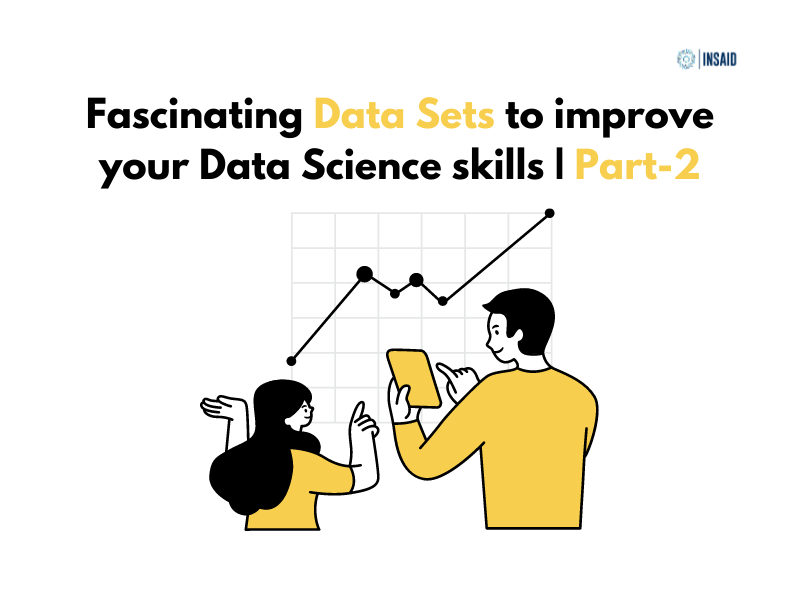We have created an archive of Data Sets for you to use to practise and improve your skills as a Data Scientist. This will be a 3-part blog series, so look out for the other parts. So welcome to Part-2!
This repository carries a range of themes, difficulty levels, sizes and attributes. These data sets are categorised that way, hence making it suitable for everyone.
They offer the ability to challenge one’s knowledge and get hands-on practice to boost their skills in areas, including but not limited to, exploratory data analysis, data visualisation, data wrangling and machine learning.
We recommend you test yourself with all the distinct data sets we’ve provided. Feel free to use them in any way you wish.
1) Can you predict the price of a house?
Level: Beginner
Recommended Use: Regression Models
Domain: Real Estate
Click here for: Dataset
With 414 rows and 7 columns related to various attributes of a house, this data set provides the market historical data of real estate valuations which are collected from Sindian Dist., New Taipei City, Taiwan.
2) Can you estimate location from WIFI Signal Strength
Level: Beginner
Recommended Use: Classification Models
Domain: Mobile/Location
Click here for: Dataset
This beginner level data set has 2,000 rows and 8 columns. The data contains wifi signal strength observed from 7 wifi devices on a smartphone collected in indoor space which could be used to estimate the location in one of the four rooms.
3) Estimate compressive strength of concrete
Level: Intermediate
Recommended Use: Regression Models
Domain: Civil Engineering/Construction
Click here for: Dataset
This set has 1,030 rows and 9 columns. Concrete is the most important material in civil engineering. The concrete compressive strength is a highly nonlinear function of age and ingredients. The actual concrete compressive strength (MPa) for a given mixture under a specific age (days) was determined from a laboratory.
4) Discover patterns relating liver disorder and alcohol consumption
Level: Intermediate
Recommended Use: Classification/Regression/Clustering Models
Domain: Healthcare
Click here for: Dataset
This data set has 345 rows and 7 columns. The data set does not contain any variable representing presence or absence of a liver disorder. The first five columns represent the result of various blood tests which may be of use in diagnosing alcohol-related liver disorders.
The sixth represents the number of alcoholic drinks consumed per day by the subject (self-reported).
5) Predict which stock will provide greatest rate of return
Level: Intermediate
Recommended Use: Clustering/Regression/Classification Models
Domain: Business/Finance
Click here for: Dataset
This data set has 750 rows and 16 columns. It contains weekly data for the Dow Jones Industrial Index, used in computational investing research. Each record is data for a week and has the percentage of return that stock has in the following week.
Ideally, this could be used to determine which stock will produce the greatest rate of return in the following week.
6) Assess heating and cooling load requirements of building
Level: Intermediate
Recommended Use: Regression/Classification Models
Domain: Energy
Click here for: Dataset
This data set has 768 rows and 10 columns. It can be used for assessing the heating load and cooling load requirements of buildings (that is, energy efficiency) as a function of building parameters.
The buildings differ with respect to the glazing area, the glazing area distribution and the orientation, amongst other parameters.
7) Determine the type of glass using oxide content
Level: Intermediate
Recommended Use: Classification Models
Domain: Physical
Click here for: Dataset
This data set has 214 rows and 10 columns. It provides details about 6 types of glass, defined in terms of their oxide content (i.e. Na, Fe, K, etc).
8) Predict chance of survival
Level: Intermediate
Recommended Use: Classification Models
Domain: Healthcare
Click here for: Dataset
This data set has 155 rows, 20 columns and provides various attributes of a patient suffering from hepatitis. This can be used to predict the patient’s chance of survival or for other purposes.
9) Predict if a note is genuine
Level: Advanced
Recommended Use: Classification Models
Domain: Banking/Finance
Click here for: Dataset
This advanced level data set has 1,372 rows and 5 columns. Data was extracted from images of genuine and forged banknote-like specimens that were taken for the evaluation of an authentication procedure for banknotes, later digitised.
Wavelet Transform tool was used to extract features from images.
10) Find a short term forecast on electricity consumption of a single home
Level: Advanced
Recommended Use: Regression/Clustering Models
Domain: Electricity
Click here for: Dataset
This data set has 2,075,259 rows and 9 columns. This data set provides measurements of electric power consumption in one household with a one-minute sampling rate over a period of almost 4 years.
Different electrical quantities and some sub-metering values are available.
 Pin
PinRead more such blogs. Explore our A-Z blog page for even more product management insights.






